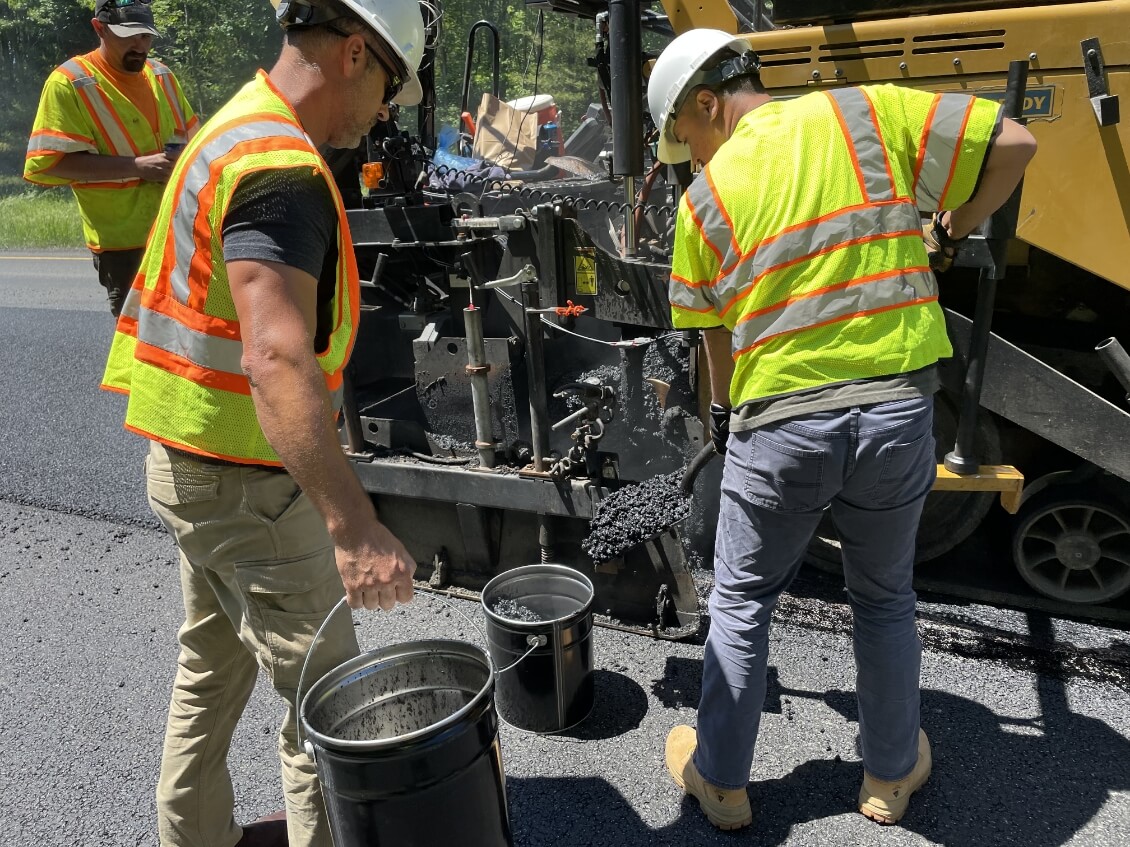The MATC site visits since 1988
The circles on the interactive map show the FHWA project, visit date, location, and other information on all of the 178 site visits through 2024. The map is also searchable for the following mixture type information, as indicated in the legend below.
The MATC provides a unique and crucial link between agencies, private industry, and academia by encouraging and supporting agencies in adopting innovations.
All locations are approximate.
History
For more than 35 years, the MATC has bridged the gap between research and implementation, and our work has continually evolved. Thanks to its mobility, the MATC has served countless members of the asphalt pavement community over the years. Our mission has brought us to all parts of the nation, as well as to interface with asphalt pavement professionals all over the world, and we’re always looking ahead to what’s next on the innovation horizon.

1980s
- Program started
- Field management of asphalt mixtures
1990s
- Introducing and implementing Superpave
2000s
- Introducing performance testing and supporting pavement design innovations
2010s
- Evaluating and implementing performance testing
2020s
- Making the connection between asphalt pavements and sustainability
- Demonstrating field technologies that improve asphalt construction quality control
The MATC milestones
1980s
In the late 1980s, the MATC began its work with an emphasis on field management of asphalt mixtures—including promoting the concept of using Marshall mix volumetric properties, instead of just asphalt content and gradation, for quality control and acceptance.
1990s
Implementation of the Superpave system was a defining achievement of the MATC’s work in the 1990s. This included expanding the mobile lab program to include the binder laboratory, helping agencies set up state binder laboratories, and conducting workshops as part of the MATC’s Superpave technology transfer activities.
2000s
As the MATC further innovated on Superpave and statistical quality control in the 2000s, developments including the Asphalt Mix Performance Tester (AMPT), Multi-Stress Creep and Recovery specification, and Warm Mix Asphalt produced new data and opportunities that informed and improved standards, technology, and software for the asphalt paving community.
2010s
Performance testing expanded and improved significantly in this decade, including new tests like Texas Overlay, that are now part of the AMPT program. In 2019, the MATC re-tooled the binder lab to provide deep-dive technical analysis, which is operated by the Asphalt Binder and Mixture Laboratory at Turner-Fairbank Highway Research Center.
2020s
As we look to the future, the MATC is focused on tying asphalt materials to pavement life cycle through a wide variety of tests and programs. Early on in this decade the MATC has already seen significant growth and progress in expanding its battery of tests – with X-ray fluorescence, the asphalt quality binder test, dielectric profiling system, pulse induction technology, and many more.
Learn More
The MATC routinely presents information at meetings and conferences. For additional options and information, contact us at FHWA-MATC@dot.gov.
Image Source: FHWA
Back To Top

